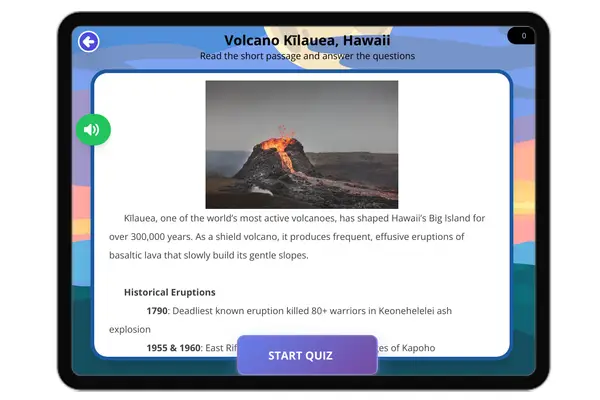Convergent Boundary: When Earth's Plates Collide — Passage
The Earth's tectonic plates are constantly moving, and when they push together, they form convergent boundaries. These collisions create some of the planet's most dramatic landscapes, from towering mountain ranges to deep ocean trenches. There are three main types of convergent boundaries, each producing unique geological features.
1. Oceanic-Continental Collision
When an oceanic plate (denser) slams into a continental plate (less dense), the heavier oceanic plate is forced beneath in a process called subduction. This creates deep trenches and violent volcanoes along the edge of the continent. The Andes Mountains in South America formed this way, as the Nazca Plate subducts beneath the South American Plate, fueling eruptions like Mount St. Helens.
2. Oceanic-Oceanic Collision
When two oceanic plates collide, the older, denser plate sinks, forming a subduction zone. This creates volcanic island arcs and the deepest trenches on Earth. The Mariana Trench, the deepest point in the ocean, was formed by the Pacific Plate diving beneath the smaller Mariana Plate. Nearby, the Mariana Islands are a chain of volcanoes built from melted subducted rock.
3. Continental-Continental Collision
When two continental plates collide, neither sinks easily because they are both lightweight. Instead, the crust crumples upward, forming massive mountain ranges. The Himalayas, home to Mount Everest, are still rising today as the Indian Plate smashes into the Eurasian Plate at about 5 cm per year.
These collisions don’t just build mountains—they also trigger earthquakes and volcanic activity. By studying convergent boundaries, scientists better understand how Earth’s surface evolves over millions of years.
Fun Fact: Did you know the Himalayas are still growing taller every year? Thanks to the ongoing collision between India and Eurasia, Mount Everest rises about 4 mm annually—that’s roughly the height of a pencil eraser!
What is the main process that occurs when an oceanic plate collides with a continental plate?
Seafloor spreadingSubductionTransform faultingRift valley formationWhich of these mountain ranges was formed by continental-continental collision?
Andes MountainsRocky MountainsHimalayan MountainsAppalachian MountainsWhat feature is created when two oceanic plates converge?
Mid-ocean ridgeVolcanic island arcRift valleyFault-block mountainThe Mariana Trench is an example of:
Oceanic-continental convergenceContinental-continental convergenceOceanic-oceanic convergenceDivergent boundaryWhy do continental plates not typically subduct?
They are too denseThey are too buoyant (less dense)They are too thinThey are always older than oceanic platesWhat causes volcanoes to form in the Andes Mountains?
Hot spots in the mantleSubduction of the Nazca PlateDiverging platesTransform fault movementWhich statement about convergent boundaries is FALSE?
They can create deep ocean trenchesThey always result in subductionThey can produce earthquakesThey may form volcanic mountainsApproximately how fast is the Indian Plate moving into the Eurasian Plate?
1 cm per year5 cm per year10 cm per year20 cm per year













